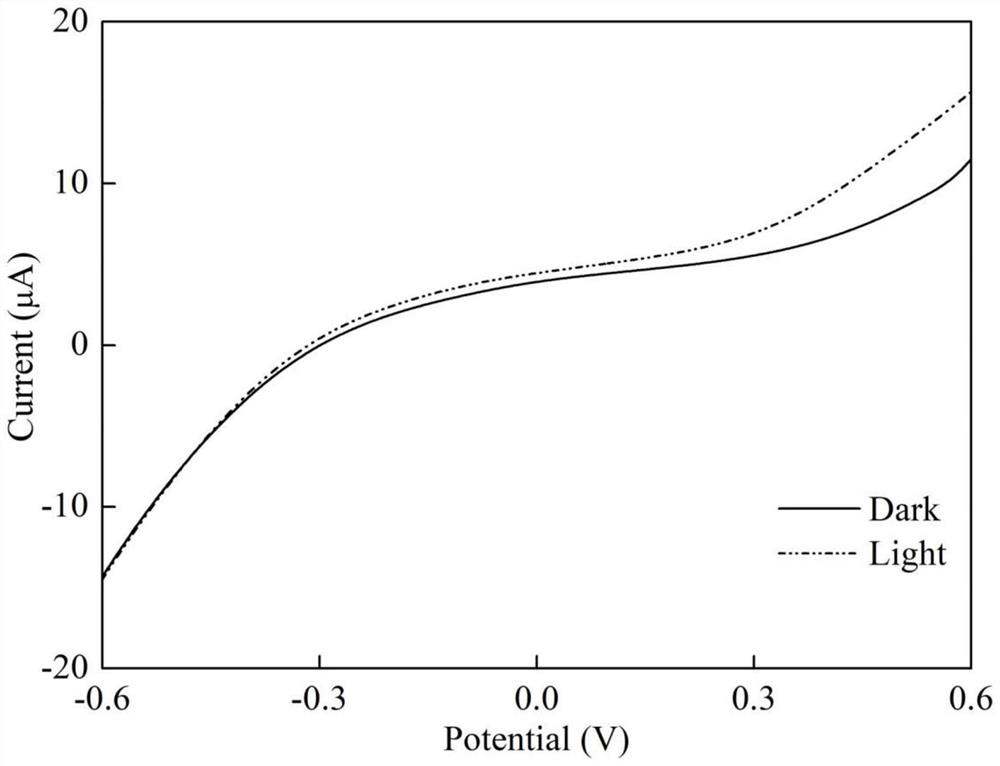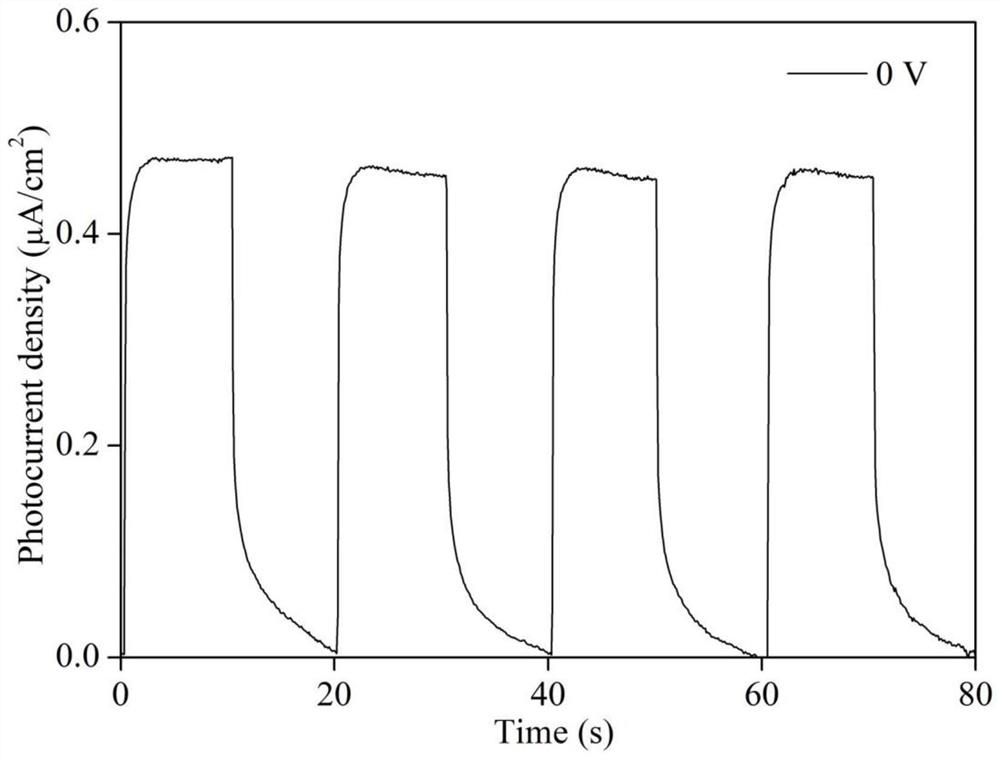Method for improving performance of flexible photoelectric detector
A photodetector and flexible technology, applied in instruments, measuring devices, scientific instruments, etc., can solve the problems of easy leakage and large volume, and achieve the effects of low cost, enhanced photocurrent, and simple manufacturing process
- Summary
- Abstract
- Description
- Claims
- Application Information
AI Technical Summary
Problems solved by technology
Method used
Image
Examples
Embodiment 1
[0038] A method for improving the performance of a flexible photodetector, wherein the flexible photodetector is a photoelectrochemical photodetector with a solid electrolyte as a conductive medium, comprising the following steps:
[0039] 1) Soak and clean the PET film with acetone and absolute ethanol successively for 15 minutes and dry to obtain a pure sample;
[0040] 2) Dissolve 200 mg of molybdenum disulfide powder in 80 ml of N-methyl-2-pyrrolidone solution and perform ultrasonic treatment for 24 hours. After the ultrasonic treatment, wash twice with acetone, absolute ethanol, and deionized water, each time for 30 minutes. Finally, the wet powder was dried at -45°C for 24 hours to obtain a gray-black two-dimensional molybdenum disulfide nanosheet sample;
[0041] 3) Take 5 mg of superconducting carbon black, add 10 ml of N-methyl-2-pyrrolidone solution, and perform ultrasonic treatment for 30 minutes to obtain a uniform carbon black solution with a concentration of 0.5...
Embodiment 2
[0052] With a kind of method for improving flexible photodetector performance described in embodiment 1, difference is:
[0053] In step 5), 3 g of polyvinyl alcohol was added to 30 ml of deionized water, and magnetically stirred at a temperature of 95° C. for 30 min to obtain a uniform and transparent solid electrolyte. Use directly after cooling at room temperature for 6 hours.
[0054] Figure 5 Time-current curves for the fabrication of flexible photodetectors without NADPH addition in solid electrolyte. From the figure we can see that the photodetector exhibits 0.2μA / cm 2 The photocurrent density of the image 3 This is because the addition of NADPH can effectively inhibit the recombination of photogenerated carriers and greatly improve the performance of photodetectors.
Embodiment 3
[0056] With a kind of method for improving flexible photodetector performance described in embodiment 1, difference is:
[0057] In step 5), 3 g of polyvinyl alcohol was added to 30 ml of deionized water, and magnetically stirred at a temperature of 95° C. for 30 min to obtain a uniform and transparent solid electrolyte. Cool at room temperature for 6 hours, add 5 mg of NADPH powder, and continue stirring at room temperature for 30 minutes to obtain a solid electrolyte with NADPH added.
[0058] Figure 6 Time-current curves for the preparation of flexible photodetectors with the addition of 5 mg NADPH in solid electrolyte. From the figure we can see that the photodetector exhibits 0.35μA / cm 2 The photocurrent density of the image 3 This is because as the mass of NADPH increases, the ability to suppress photogenerated carriers also increases, which can further improve the performance of the photodetector.
PUM
 Login to View More
Login to View More Abstract
Description
Claims
Application Information
 Login to View More
Login to View More - R&D
- Intellectual Property
- Life Sciences
- Materials
- Tech Scout
- Unparalleled Data Quality
- Higher Quality Content
- 60% Fewer Hallucinations
Browse by: Latest US Patents, China's latest patents, Technical Efficacy Thesaurus, Application Domain, Technology Topic, Popular Technical Reports.
© 2025 PatSnap. All rights reserved.Legal|Privacy policy|Modern Slavery Act Transparency Statement|Sitemap|About US| Contact US: help@patsnap.com



